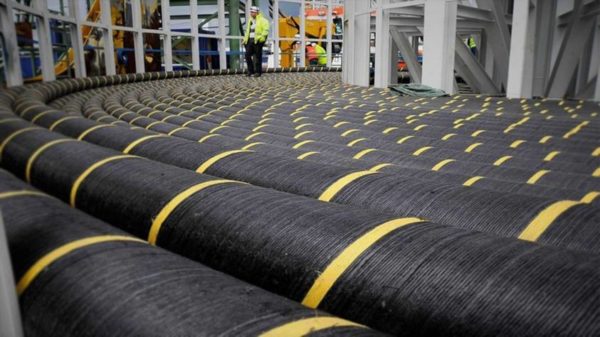The UK government recently released “Powering Up Britain – Energy Security Plan,” a new energy strategy aimed at ensuring the energy independence of Great Britain.
For PV, the document sets a 2035 solar target of 70 GW and provides a series of generic actions to support the deployment of rooftop PV and large-scale solar installations. It does not provide specific information on the financial support for the proposed targets.
However, it does contain a brief reference to one of the most ambitious solar power supply projects ever developed on a global level – a 10.5 GW wind-solar project under development in Morocco by UK-based Xlinks. The project will be linked via a submarine cable to the UK power system.
“The government is interested in the Xlinks project, a proposed large scale onshore wind, solar and battery electricity generation site in Morocco that would exclusively supply power to the Great Britain grid via high voltage direct current subsea cables,” says the document. “The government is considering – without commitment – the viability and merits of the proposal to understand if it could contribute to the UK’s energy security.”
Xlinks CEO Simon Morrish told pv magazine that this hows the “enormous potential” of the project. He said it “will help the UK accelerate its transition to clean sources of power, increase energy security, reduce consumer bills, and achieve net zero.”
In May 2022, UK investment firm Octopus Energy signed an agreement with Xlinks to develop the huge facility. If built, it will include 7 GW of solar capacity and 3.5 GW of wind in Morocco. The facility will also be connected to 5 GW/20 GWh of battery storage.
The wind-solar complex will be connected to the UK power network in Alverdiscott, Devon, and Pembroke via a 3,800-km high voltage direct current (HVDC) transmission line. The developer said this could include four separate cables, making it the longest subsea power transmission link in the world.
Xlinks plans to sell the power to the UK grid under a contract-for-difference scheme.
pv magazine print edition
“We are hoping to complete a bilateral negotiation with the UK Department for Business, Energy and Industrial Strategy (BEIS),” Morrish told pv magazine in April 2021, when the project was launched. “But we could also compete in future auctions if there was an allocation for this sort of project.”
However, without the contract-for-difference option, the project will have limited chances of being implemented.
This content is protected by copyright and may not be reused. If you want to cooperate with us and would like to reuse some of our content, please contact: editors@pv-magazine.com.




The supposed financial commitment of Octopus Energy has been below 0.1 percent of the proposed financial requirements of this project. Whilst OE is a serious player, all of their current investments are orders of magnitude smaller than this project.
You would think it would be cheaper to hop along the coasts of Iberia and France, tapping additional markets.
Disappointingly, there is no mention of pumped hydro storage. The Atlas and Anti-Atlas chains are still over 1000m near the coast. Since evaporation losses would be high, the water might have to come from the sea. The technology was demonstrated in Okinawa in the 70s, though the small plant was disconnected some years ago as uneconomic. There is an additional cost from stainless steel pipework and other parts, but on the plus side the sea itself provides the lower reservoir for free.. Oman has a parallel opportunity.
A 5 GW/20 GWh battery would be quit a bit bigger than what actually is called a Giga-battery. It would also cost about 5 Mrd (‘Billion’).
A 3600 km long extra high voltage line would lose at least about 20% of the energy along the route. But perhaps this is acceptable in comparison to other solutions.
It would make a lot more sense to expand the project a little and ensure ordinary Moroccans get a share of the power from a joint system. Better politics, therefore better security.
Energy security? Has anyone heard of Nordstream?